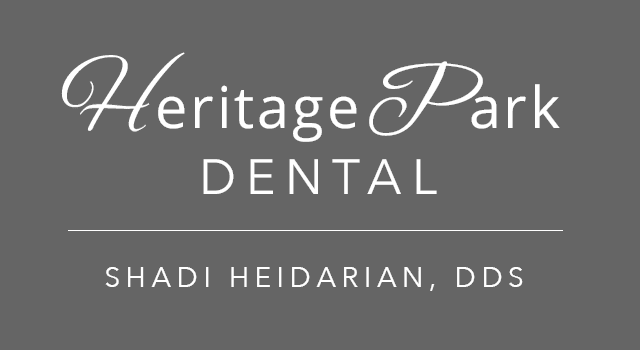Types of Dental X-Ray

Dental imaging is an essential part of preventative care, allowing Dr. Heidarian to catch oral health problems before they become serious. It’s common for patients to question their necessity, and the process to receive them is often somewhat uncomfortable. However, receiving a dental x-ray can help save your jaws, teeth, and gums. In some cases, these x-rays can even save your life by catching serious abscesses or hidden concerns before they have tragic consequences. Below we’re going to provide some basic on the types of dental x-rays Dr. Heidarian may request and what they can reveal.
What Can X-Rays Reveal About My Dental Health?
X-rays are able to see through the skin, gums, and to some extent, even the bone to reveal concerns that are happening underneath. While decay can often be detected visually above the gum line and on the outer surfaces of teeth, the spaces between teeth can hide decay that x-rays can reveal. If you’ve ever received a filling, you may think that you’re safe from decay inside your tooth, but decay can happen underneath the filling if bacteria get in. Without dental x-rays, this decay could go unnoticed until it’s too late to save your tooth. Other things that can be caught using dental x-rays include:
-
Bone deterioration in the jaw
-
Signs of infection in a root canal or bone
-
Composition and location of your teeth to prepare for dentures, braces, and implants.
-
Abscesses (Infection occurring between tooth and gum, or at the root of a tooth)
-
Tumors and cysts
-
Available space in the mouth for new teeth in children
-
Presence and development of wisdom teeth
-
Impacted teeth that need extraction
All of these things are typically hidden from the naked eye and would go unnoticed until they become serious or painful without x-rays.
What Types Of Dental X-Rays Are There?
There are two broad categories of x-rays, intraoral and extraoral. These terms describe the location of the x-ray film when the image is being taken. Intraoral x-rays have the film outside the mouth, while extraoral has the film located inside the mouth during their creation. Of the two types, Intraoral is much more common. As broad categories, these each contain different types of x-rays.
-
Intraoral X-Rays (Film in The Mouth)
-
Bitewing – These reveal details of the upper and lower teeth in a small area of the mouth. The visible part of the tooth (crown), the anchoring point (root), and the bone that supports it are revealed with these x-rays.
-
Periapical – This x-ray is used to reveal the whole tooth to the dentist, showing more than the bitewing by revealing the bone beneath the root, not just around it.
-
Occlusal – The placement and development of the entire upper or lower jaw are revealed using an occlusal x-ray.
-
Extraoral x-rays include a variety of specialized image types that are used to reveal the salivary glands, create a full 3-D image of your mouth, and more depending on the specific type.
If you have additional questions about dental x-rays and the role they play in the care provided by Dr. Shadi Heidarian, call us today! Our team of dental specialists are available to help you arrange an appointment, understand your care, and welcome you to our dental family of patients. As a respected provider of dental care in Paso Alto, CA, you couldn’t be in better hands.

